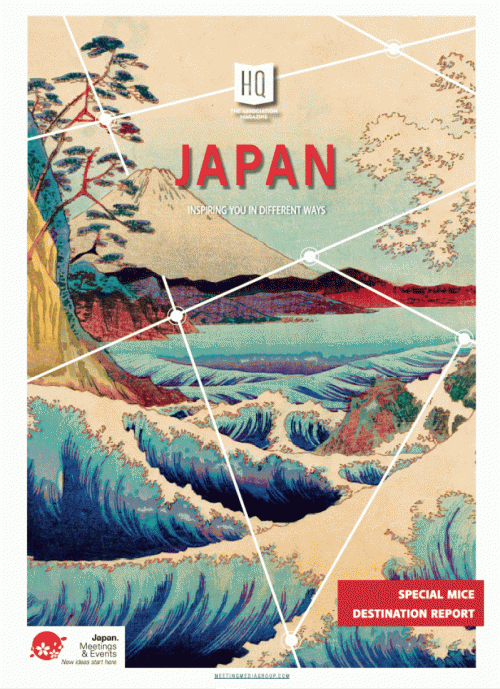Designing for Change: How Destinations and Associations Can Collaborate for Lasting Societal Impact
Magazine:
29th May, 2025
Category:
Image:

Body:
Too often, legacy is treated as a fortunate side effect of a successful event. But what if impact were not a byproduct, but the objective itself? That was the provocation at the heart of the Destination Social Impact: Global Case Studies session at IMEX Frankfurt 2025. Moderated by Vivian Xu, Managing Director of Meeting Media Company and publisher of Headquarters Magazine, the discussion brought together international experts to examine how events can become vehicles for long-term societal transformation.
The session began with a critical distinction between social and societal impact. While social impact may include short-term contributions such as fundraising or community outreach, societal impact involves systemic, sustainable change. As Xu explained, the issue is not just about doing good during the event window, but about embedding events into the policy and civic life of the host destination. That requires intention, alignment and sustained effort. Impact is not inevitable. It must be designed.
“It is not a byproduct,” said David De Alves Goncalves, Director of Strategy at the STEM Council. “Impact has to be planned for. If you do not plan for it, you will not see it eventuate.”
That planning begins not with a venue contract, but with dialogue. Panellists emphasised the importance of early collaboration between associations, convention bureaux and an expanded cast of local stakeholders. Tuya Beyers, International Association Expert at VisitFlanders, described how Flanders cities approach this through a methodical mapping of goals. “We start by finding the sweet spot,” she said. “What does the association want to achieve? What does the city stand for? Who are the end beneficiaries—patients, students, professionals—and what would value look like for them? If we find a strong overlap, then we move forward with co-creation.”
This process can be complex, particularly when professional conference organisers (PCOs) are navigating limited budgets, business models and operational constraints. “It is a challenge,” Beyers acknowledged. “But the solution is to start small. One activity, one collaboration. You do not need an engineering diploma to create impact.”
Singapore has developed a structured approach to help associations navigate this complexity. Dr Edward Koh, Executive Director for Conventions, Meetings and Incentive Travel at the Singapore Tourism Board, introduced the FIRM model—Frame, Ideate, Realise, Measure. This framework helps event planners define their ambitions early, match with local partners, and establish clear metrics. “Some associations begin with impact in mind. Others are focused on financial or operational viability. We tailor our support accordingly,” Koh explained.
Case studies gave these frameworks tangible context. The World Stroke Congress in Singapore, for instance, was accompanied by a citywide campaign that lit 17 landmarks in blue to raise awareness for stroke survivors. A walkathon brought together patients, medical professionals and caregivers, raising six-figure donations and generating national media attention. “Even today, people still remember it,” said Koh. “But real measurement takes time. It is a longitudinal process.”
Knowledge sharing between destinations was another key theme. As international associations rotate their congresses globally, the potential to carry forward impact strategies becomes increasingly important. Beyers pointed to the Global Impact Alliance, an informal network of destinations working to standardise definitions and share best practices. Koh described how Singapore’s experience hosting the World Congress of Dermatology, with its sustainable exhibition policies, is now informing the next edition in Guadalajara in 2027.
The Rotary Convention 2024 offered a further example of deep collaboration. Drawing inspiration from the Melbourne edition, Rotary worked with Singaporean partners to launch a mangrove conservatory at the Singapore Institute of Technology, backed by over $500,000 in donations. “Mangroves absorb four times more carbon than trees. They are critical to our climate strategy,” said Koh. “That project hit every priority: education, environment and coastal protection.”
Despite the success stories, the session also addressed common points of friction. Goncalves noted that associations often hesitate when convention bureaux are seen as purely transactional actors. “We want CVBs to be co-creators. Not just service providers, but partners who understand our policy goals and help open the right doors.” He added that missed opportunities frequently occur when expectations are misaligned early in the planning process.
Beyers agreed that not every event will yield a deep legacy, and that destinations must be realistic. “The first step is asking the right questions. If there is no alignment, we adapt. But if there is ambition, we help shape it. Sometimes that means scaling back. Sometimes it means inviting new stakeholders in.” She highlighted the value of hosting pre-conference stakeholder events, bringing together local policymakers, researchers, hospitals and citizens. “It is where unexpected partnerships begin.”
Throughout the discussion, the panellists returned to the central role of relationships. Whether mapping out an association meetings strategy or designing sustainable event management plans, the message was clear: start early, build trust and work iteratively.
“In our sector, it always comes back to the human connection,” said Xu in closing. “If we want to build meaningful partnerships, we need to start with shared purpose, trust and an authentic understanding of what each side really needs.”
“We still think of events as standalone moments,” she added. “But their potential lies in what they leave behind, in people, in policy, and in place.”
For destinations and associations alike, legacy is no longer a secondary concern. It is a measure of strategic value and sectoral relevance. As this session demonstrated, impact is not something to be hoped for. It is something to be built step by step, city by city, through deliberate and collaborative effort.
Published by Meeting Media Group, the publisher of Headquarters Magazine (HQ) – a leading international publication based in Brussels, serving the global MICE industry and association community.





